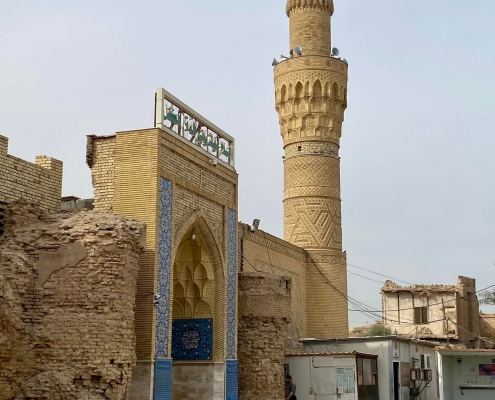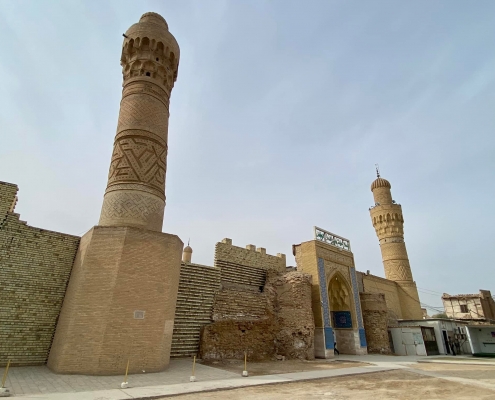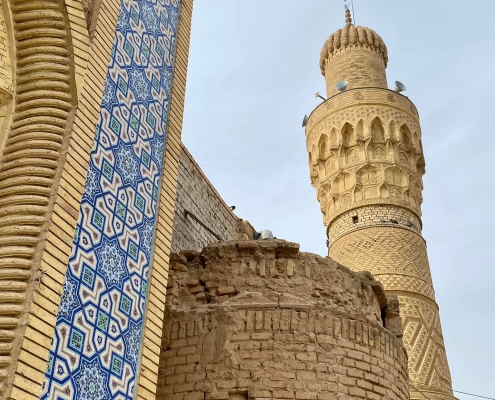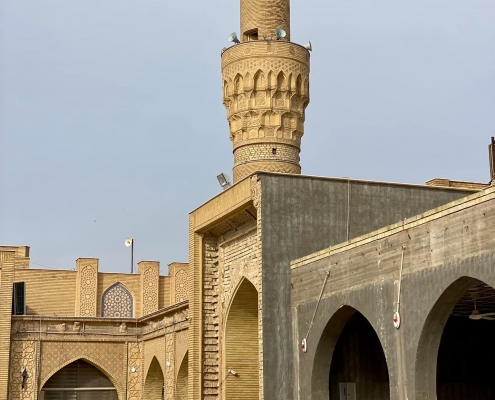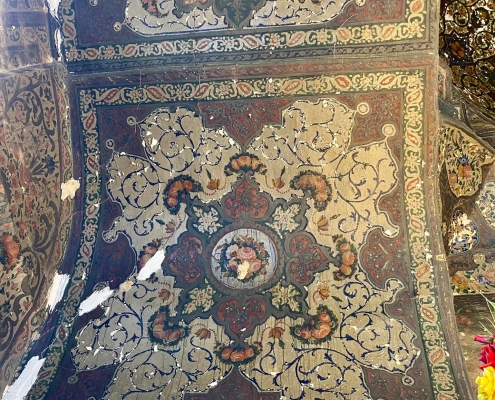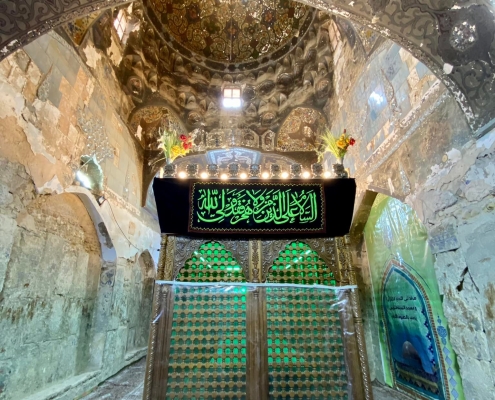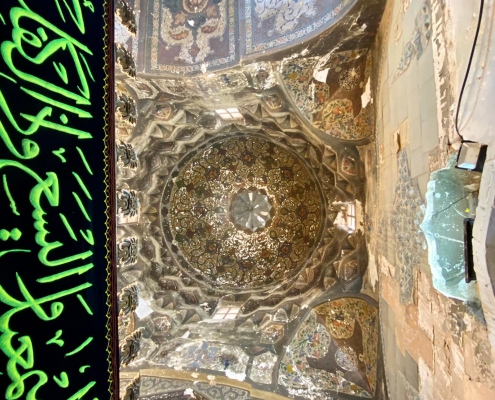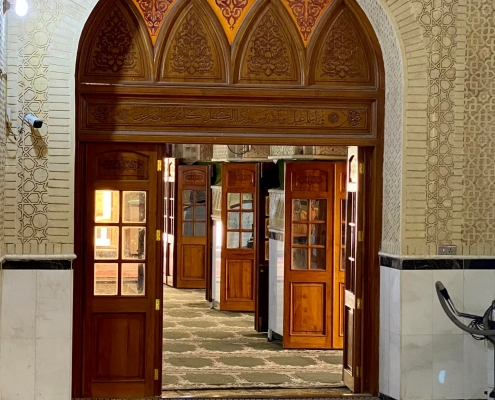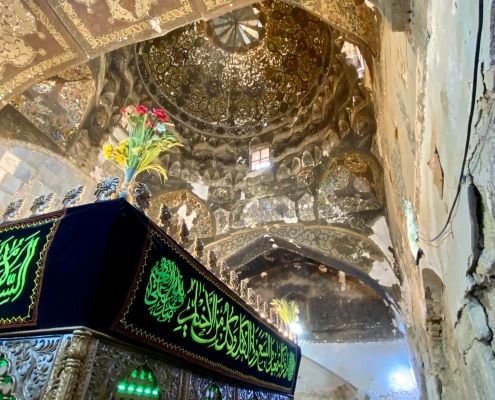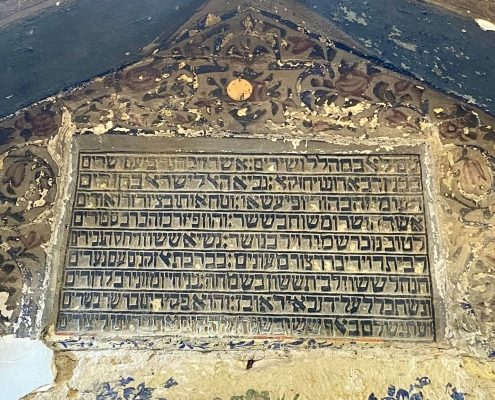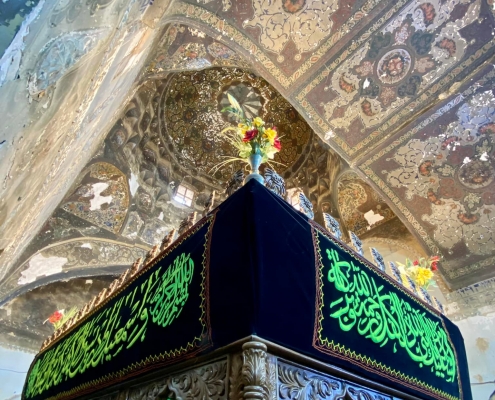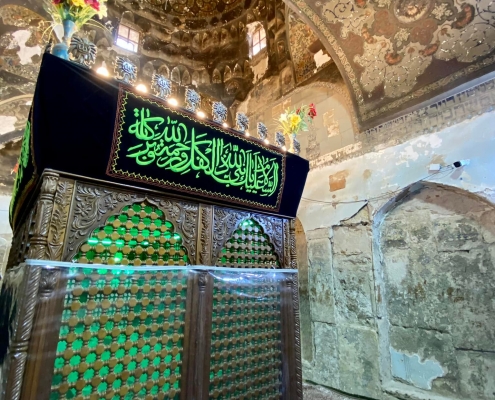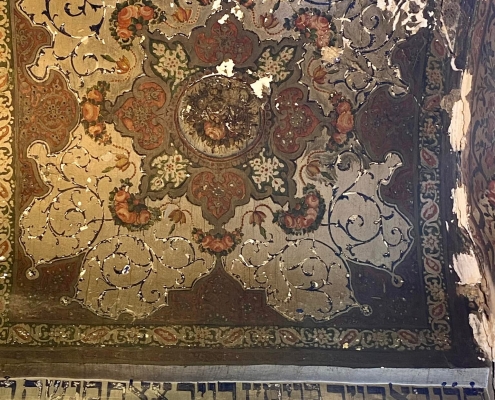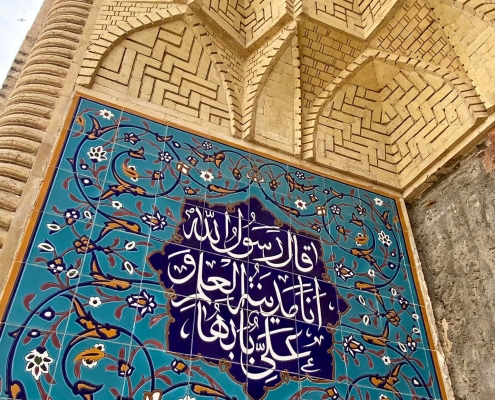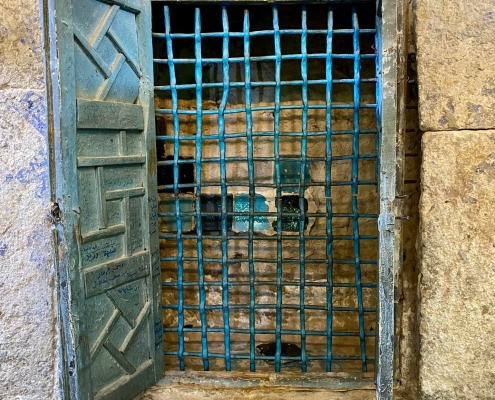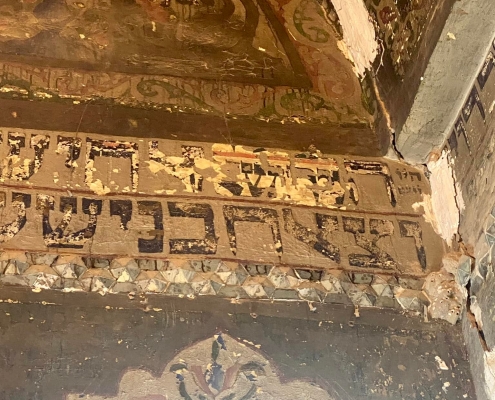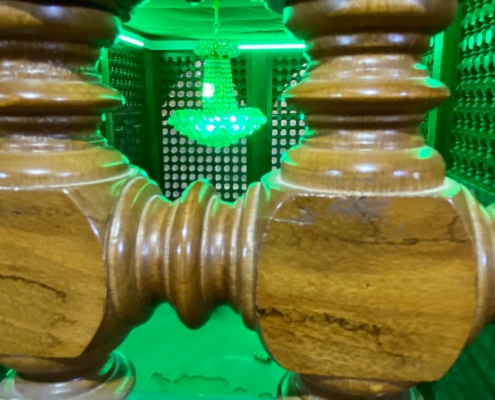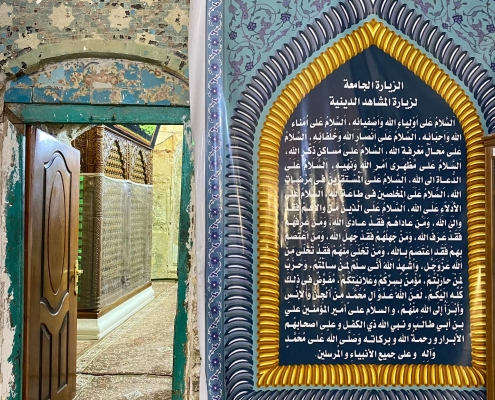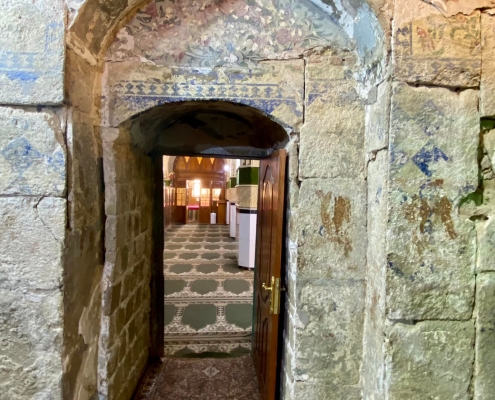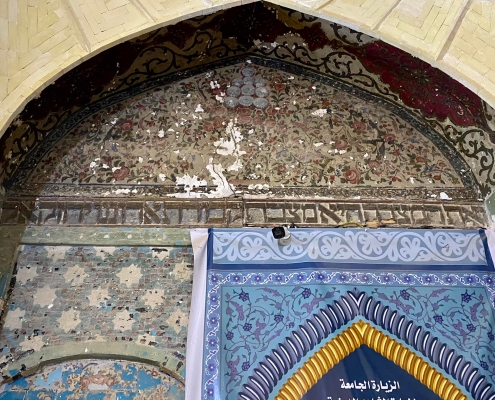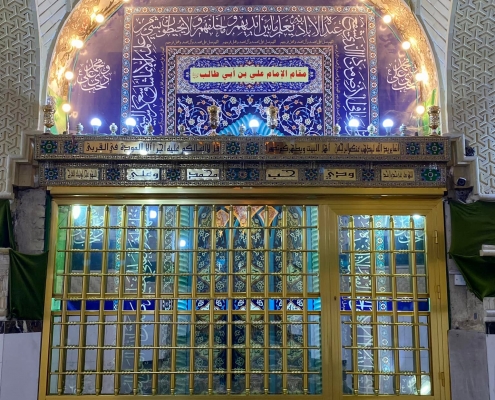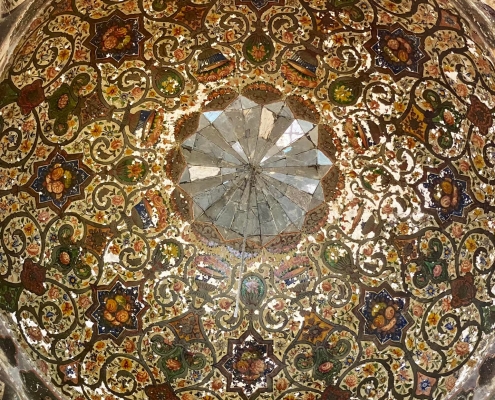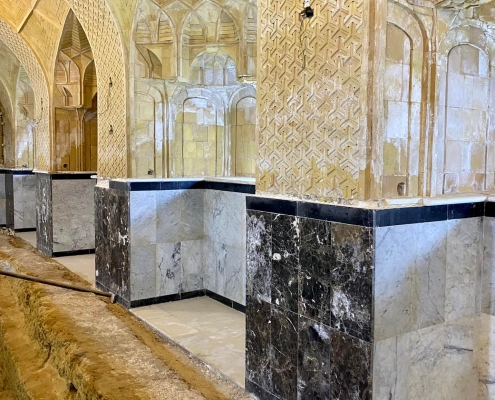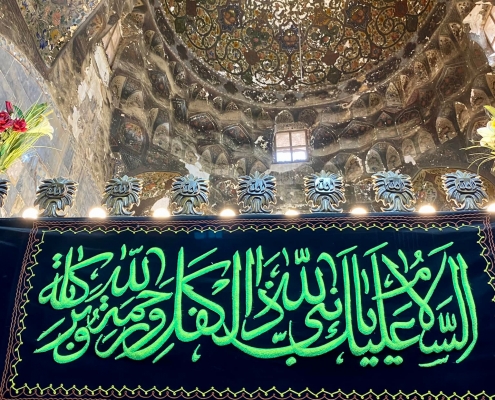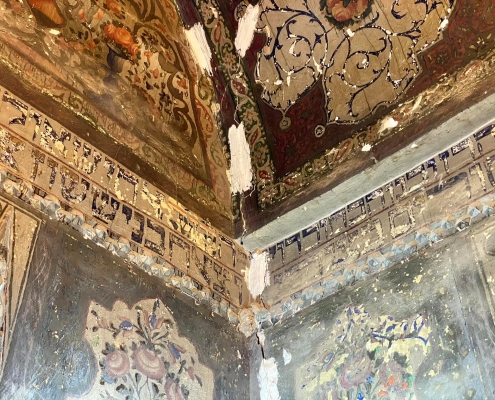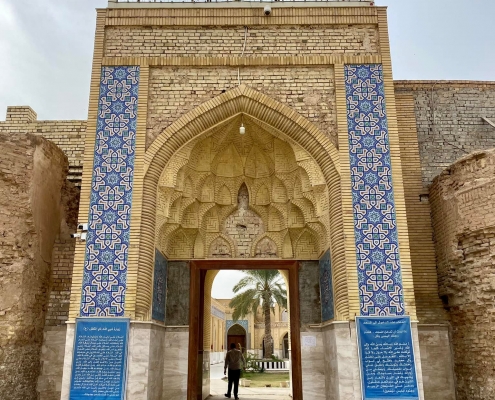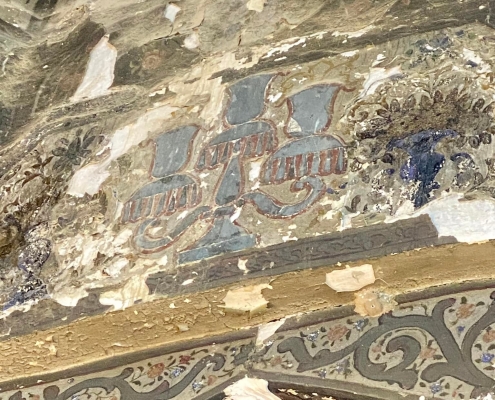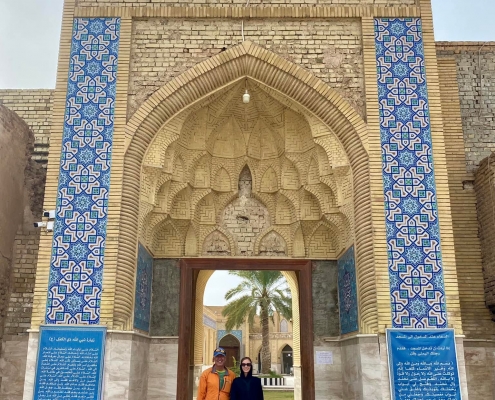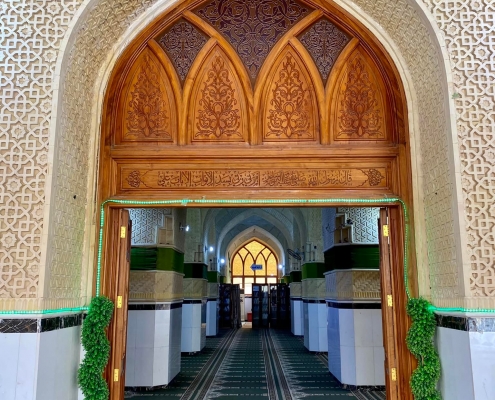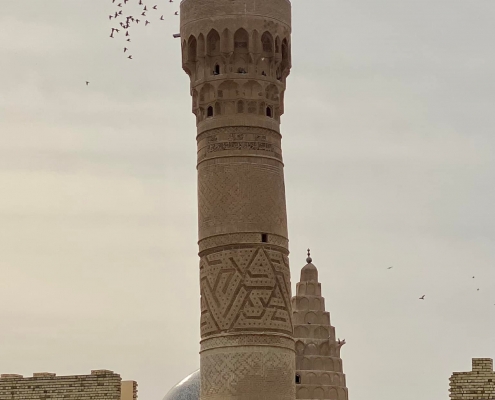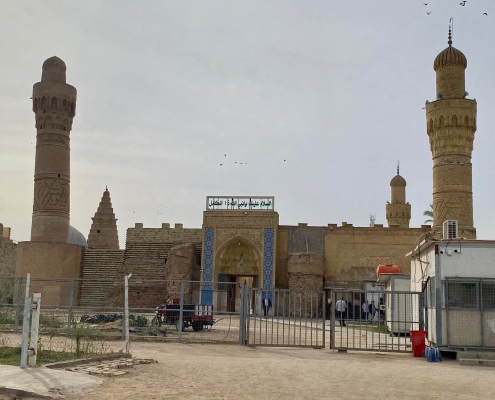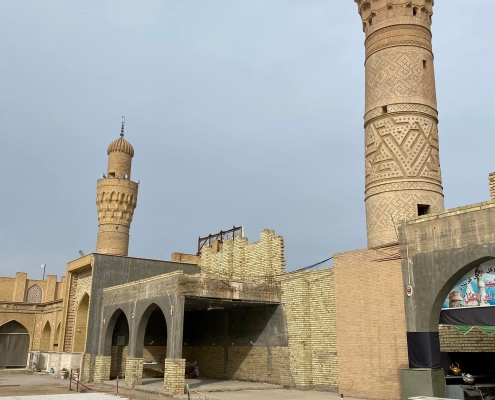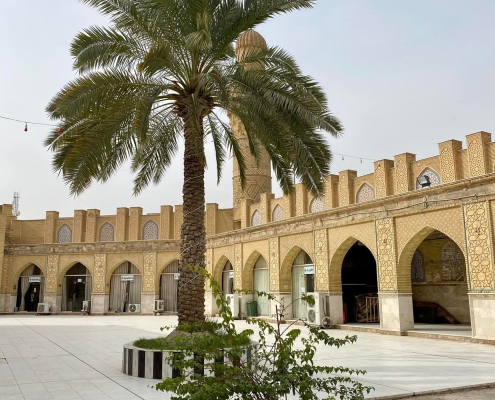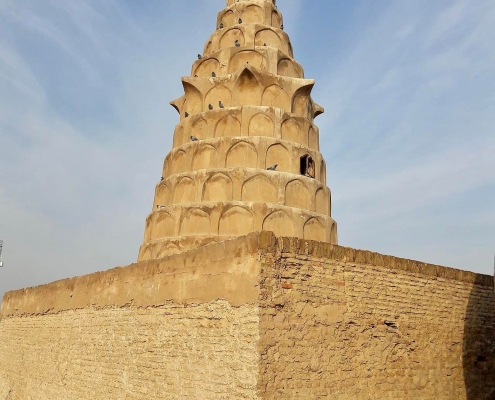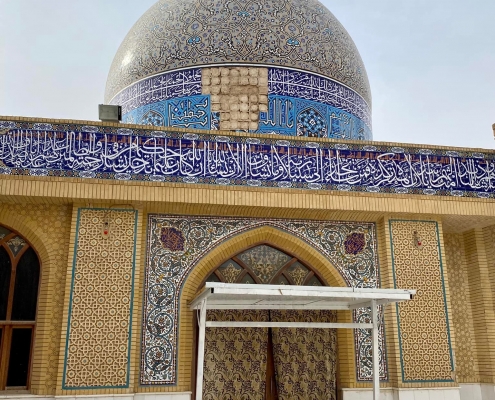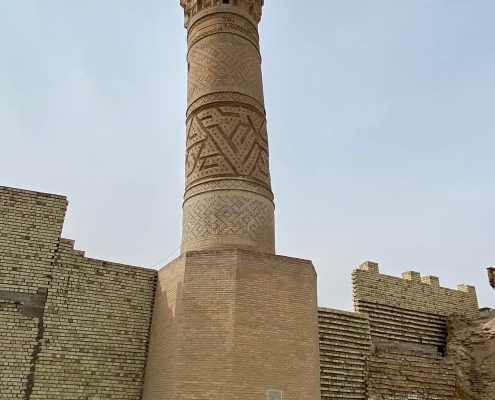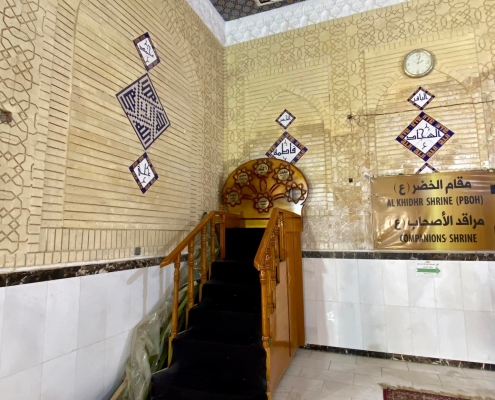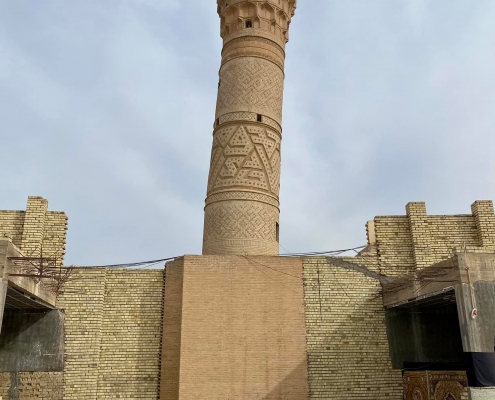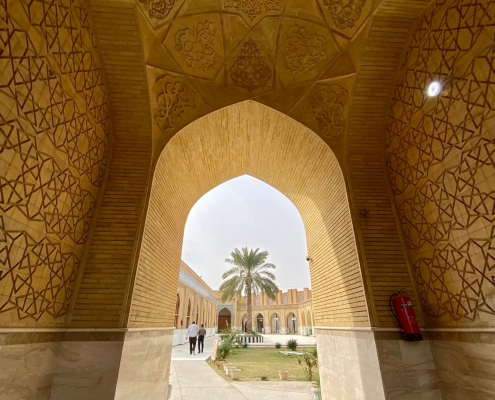Iraq: Ezekiel’s Tomb in Al Kifi
The tomb inside the An-Nukhailah mosque in the town of Al Kifi is believed to be the place where the biblical prophet Ezekiel was buried, both Muslims and Jews revere the place. The beehive tomb is unlike any other structure around and quite unusual, although it’s very difficult to access and see behind all the minarets and mosque buildings. The tomb was mentioned in 8th century rabbinical texts and has been a major pilgrimage destination for Jews for centuries – supposedly up to 80 thousand Jewish pilgrims would come to the site. Starting in the 12th century, it became sacred in Islam as well, associated with Prophet Dhu’l-Kifl (aka Hazaqiyal), and the old leaving minaret dates to this time. Ezekiel is mentioned in Jewish, Christian, and Muslim scriptures alike, a reminder of the three faiths’ shared Abrahamic roots. For many years it was a peaceful site of shared pilgrimage. It was only in 1860, when the Muslims tried to wrest the control of the tomb from the Jews, and the British Consul in Baghdad had to intervene and petition Constantinople to arbitrate. Constantinople ruled the site to be Jewish, and thousands of Baghdadi Jews continued coming here every year. Under Saddam, a mosque was built around the beehive tomb and many Hebrew inscriptions were removed or replaced with Koranic verses. Now it’s essentially an ancient Jewish shrine fully and completely enclosed within a mosque. Nevertheless, you could still see a lot of inscriptions and writings in Hebrew all around the ceilings and walls.

